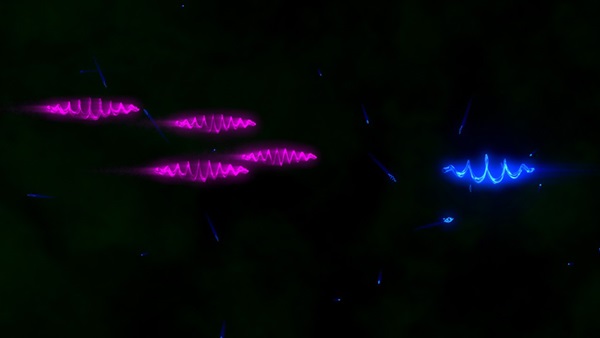Key Takeaways:
- The extragalactic background light (EBL) can be measured through various methods, one of which involves analyzing gamma rays from distant blazars.
- As blazar gamma rays traverse space, they can interact with EBL photons, leading to their annihilation into electron-positron pairs.
- This annihilation process exhibits an inverse energy relationship, where high-energy gamma rays interact with low-energy EBL photons and vice versa.
- Astronomers leverage the observed attenuation or "missing" gamma rays to deduce characteristics of the intervening EBL.
There are many ways to measure the extragalactic background (EBL), the universe’s glow from myriad sources. One of these measurement techniques uses the light from faraway blazars — active galaxies with supermassive black holes at their centers, blasting jets of high-speed particles and radiation out into space. Scientists study the gamma rays streaming from these high-powered jets. The gamma rays have a very long journey between their blazars and Earth, where astronomers can measure them. Along the way, some of these gamma rays will strike an intervening EBL photon and annihilate into a positron and an electron.
There is a special relationship between the energy of the gamma ray and the energy of the EBL photon. A higher-energy gamma ray annihilates only with a lower-energy EBL photon, and vice versa. Astronomers can therefore use the missing gamma rays to tell them about the EBL interference.
In this animation, watch a gamma ray complete its long journey from its blazar origins, through the EBL, to the Fermi telescope orbiting Earth that measures its final energy.
Video credit: NASA/Goddard Space Flight Center/Cruz deWilde










